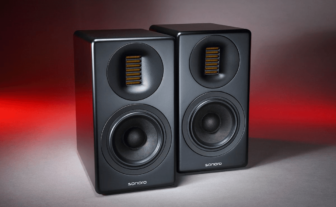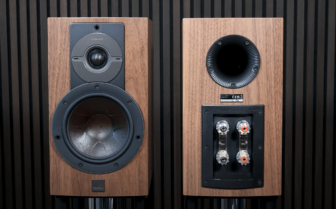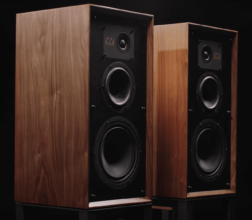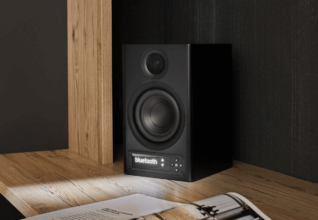Heco Aurora 200 Review
Smaller speakers often have to tackle significant challenges—both when used as bookshelf speakers and as surround-sound effect speakers. The Heco Aurora 200, priced at about $450, aims to handle these tasks with ease.
by Marius Dittert
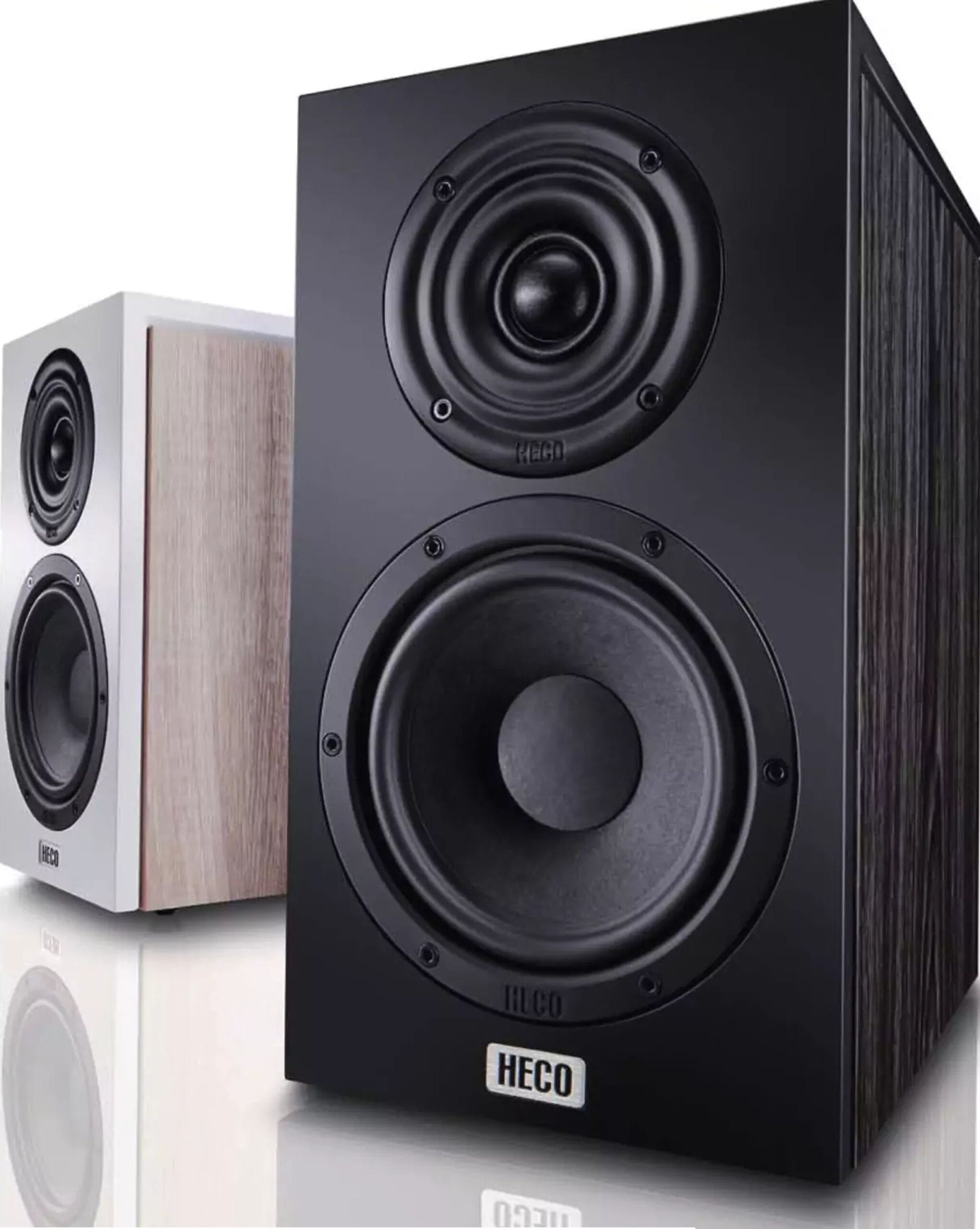
If you want high-end speakers, there are plenty of options. But if you need them to be as compact, affordable, and versatile as possible, your choices narrow quickly. That’s exactly where the Aurora 200 comes in. Heco’s goal with these budget-friendly “compact” speakers is to deliver a new benchmark in this category.
Standing about 30 centimeters tall, this two-way speaker has a distinctive MDF front baffle. Its mission: shine in a compact stereo setup using inexpensive electronics, as well as in a home theater environment.
No Cheap Drivers
The Aurora 200 is nicely constructed, except for a slightly sharp-edged decorative ring around its rear bass port. To meet Heco’s performance standards, the Pulheim-based development team chose two relatively high-quality drivers for this price range. They rely on both time-tested and classic components. One is the so-called Fluktus tweeter, which Heco has employed for around three years now.
Because the Aurora 200 focuses on what it does best, it achieves a sound pressure level of 100 dB in the lab.
This Fluktus tweeter is built on a tried-and-true polyfiber compound dome with a notably wide surround. Thanks to that, the 28 mm fabric dome can more easily handle lower frequencies, creating a smooth transition to the mid-woofer. Millimeter-accurate waves on the aluminum die-cast flange guide the dome’s dispersion in certain frequency ranges, aiming for optimal sound radiation. A dual-magnet motor, copper caps to reduce distortion, and the lightweight dome material ensure strong efficiency and clear detail.
The 12.5 cm woofer/midrange driver, mounted with six screws, uses a kraft paper cone—a homage to the “golden era of Hi-Fi.” In the 1950s and 1960s, many now-legendary midrange drivers were made from this type of long-fiber paper.
Charming Sound
Placed on a solid stand at a moderate listening distance and angled toward the listener, the Aurora 200 delivers a pleasing, “charming” tone. It also shows its audiophile side: the close positioning of the two drivers (inevitable in small speakers) lets them merge smoothly without gaps. The result is a fast, vibrant sound that separates nicely from the enclosure, underlining the acoustic strengths of small two-way designs.
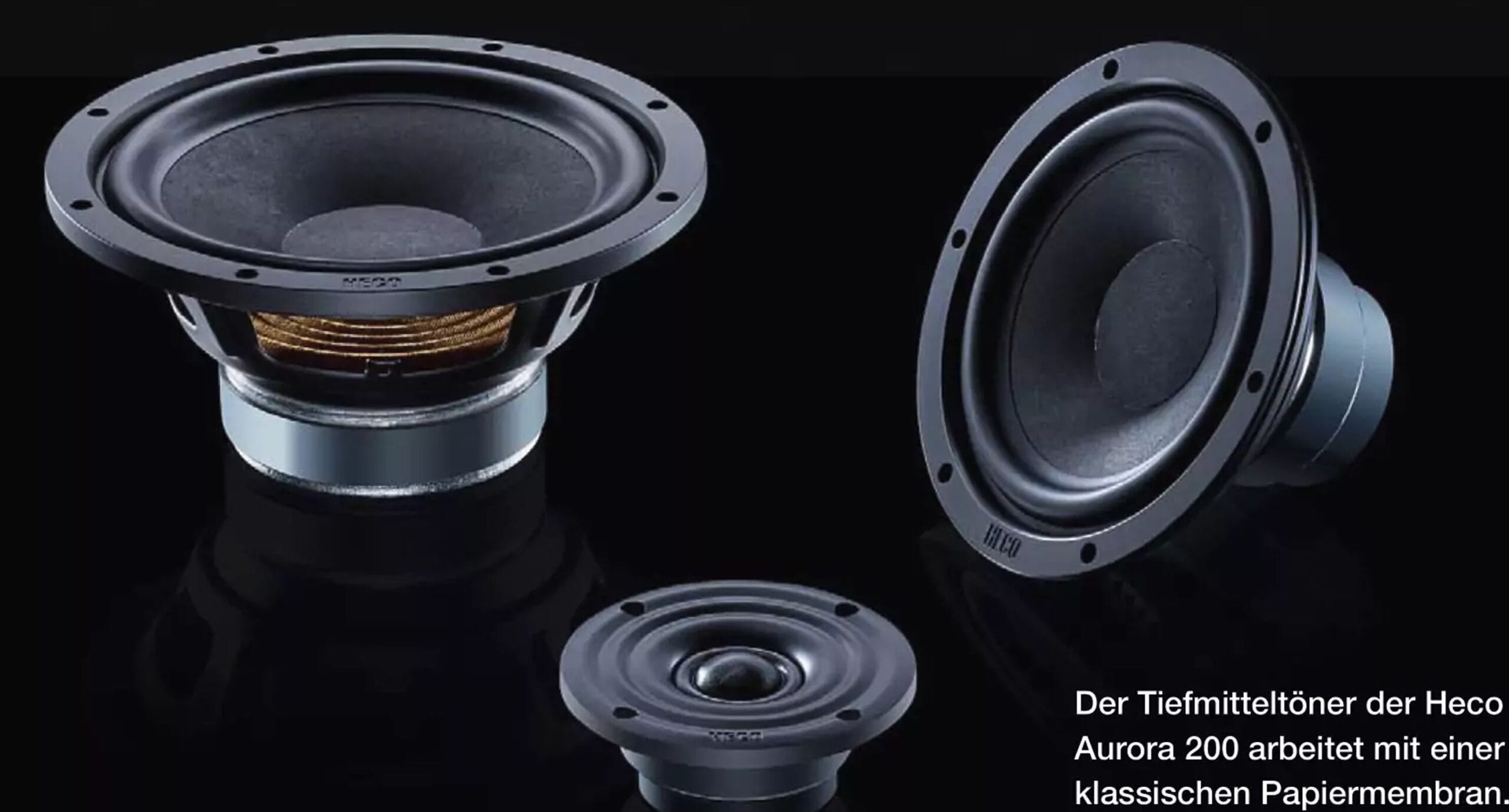
The Heco Aurora 200 uses a classic paper cone for its mid/woofer. From 3400 Hz upward, a fabric dome handles high frequencies. Both drivers are neatly integrated into the matte-finished front panel.
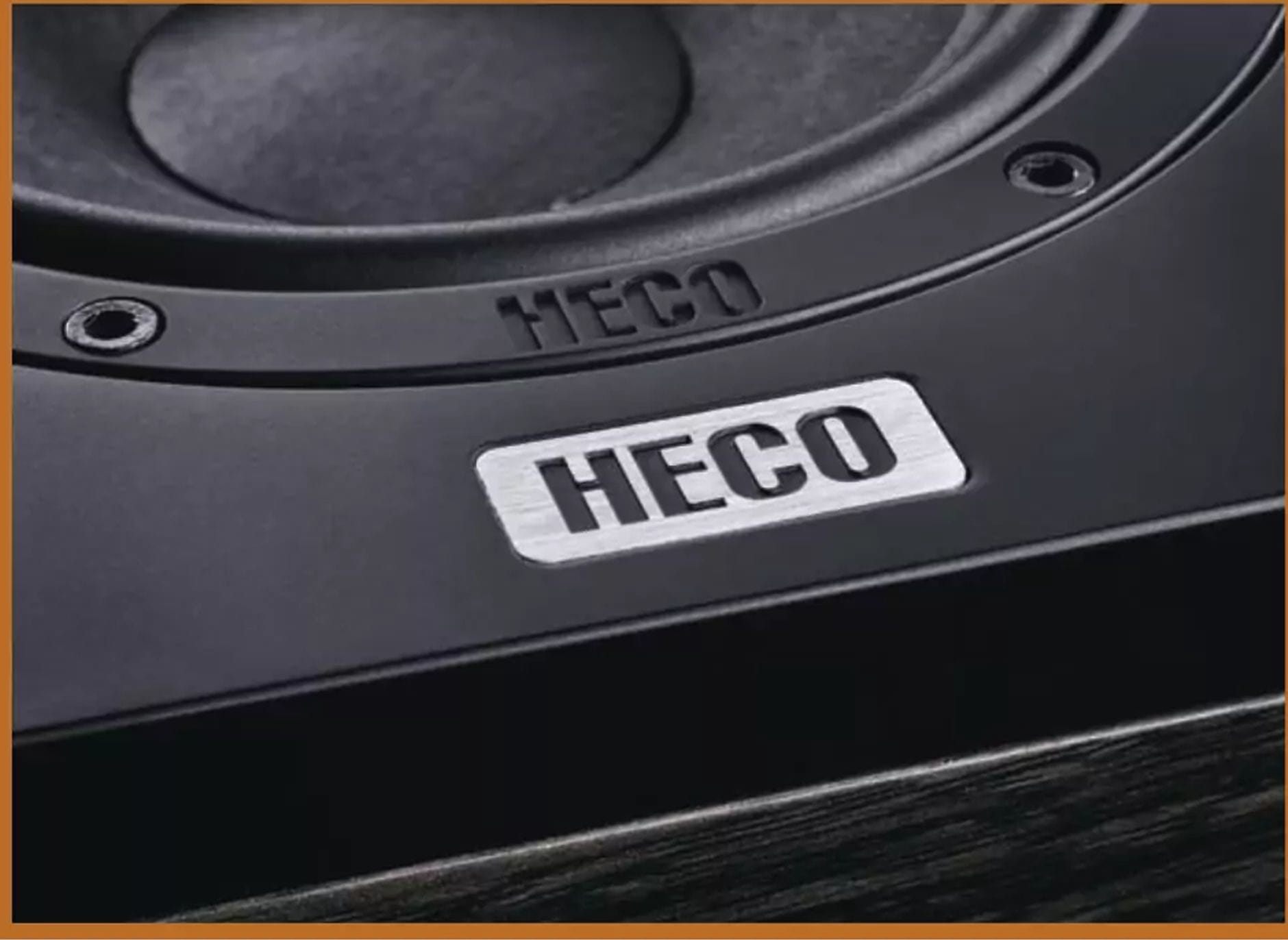
Listening to Mozart’s 23rd Piano Concerto—often considered his most profound—Leon Fleisher and the Stuttgart Chamber Orchestra (Sony) sounded not only wonderfully calm in the second movement but also unified, as though cut from a single piece. The high-quality recording at the State University of Music and Performing Arts in Stuttgart came through with impressively lifelike warmth and resonant pizzicato strings (from about 5:58 onward).
Even though the manufacturer cites a lower cutoff of 38 Hz, both lab measurements and extensive listening suggest it’s closer to 60 Hz in practice. For a compact speaker, that’s perfectly acceptable—especially since its gradual low-frequency roll-off makes it suitable for placement near a wall. It’s worth trying different positions to find the best sound.
When music grows more complex, you may notice that the Aurora 200 isn’t the last word in midrange resolution—but it also doesn’t aim to be. It’s designed to work well with affordable electronics, which became obvious when switching from a $12,595 Luxman L-595A SE integrated amp to a $500 BC Acoustique EX-214 (test to come). The scale of the sound was obviously smaller, but it still managed to be engaging. With a slight midrange dip off-axis, it reproduces voices cleanly and pleasantly, making it a great rear speaker choice for extended home theater use.
Heco Aurora 200 Specs
About $450
Dimensions (WxHxD): 17.0 x 30.8 x 24.5 cm
Weight: 7.5 kg
Measurement Charts
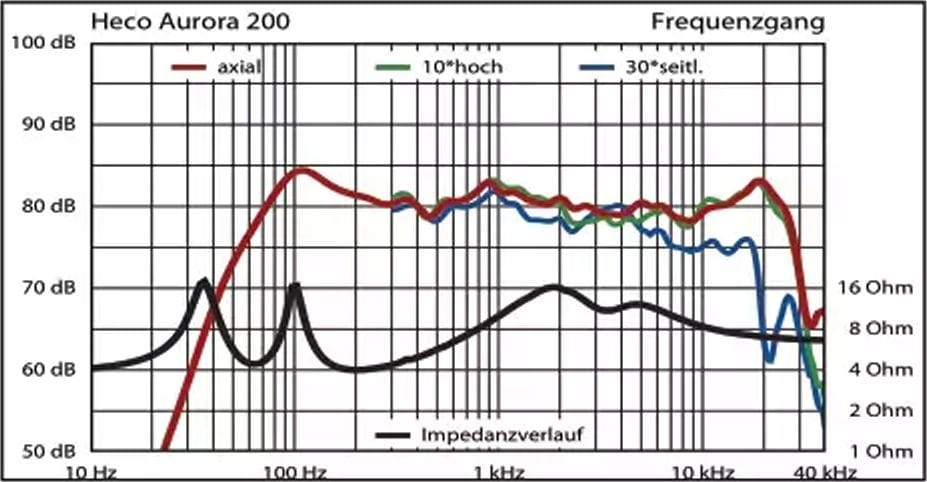
Frequency Response & Impedance Curve
Shows limited deep-bass extension with an upper bass bump, and balanced mids/highs with increasingly focused dispersion.
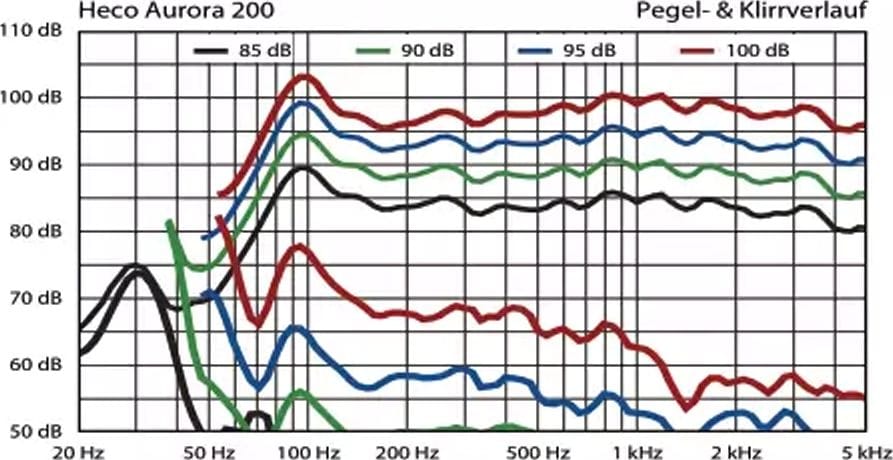
Level & Distortion (85–100 dB SPL)
Unproblematic in the midrange, rising distortion in the bass, and broad compression above 95 dB.
Lower Cutoff -3/-6 dB: 64/54 Hz | Max. SPL: 100 dB
Practice and Compatibility
Amplifier Compatibility Diagram
- Comment: It needs higher voltage, but drives easily due to its friendly impedance.
- Voltage: 18 V
- Impedance Range: 4.0 – 17.0 Ω
- Current Demand: 4.0 A
Room Acoustics and Placement
- Point them roughly at the listener. Experiment with wall distance.
- Listening Distance: 1 m–5 m
- Wall Distance: 0 m–1.5 m
- Reverberation Time: 0.2 s–0.8 s
Rating (adapted to a 10‑point scale)
- Naturalness: originally 10 → ~8.3/10
- Detail Resolution: originally 9 → ~7.5/10
- Peak Dynamics: originally 7 → ~5.8/10
- Bass Quality: originally 7 → ~5.8/10
- Imaging: originally 12 → 10/10
“For the money, it’s a nicely finished, well-equipped entry-level speaker. It sounds balanced, pleasantly textured, and rich in color, though it lacks deep bass. Its midrange is charmingly reserved, yet speech intelligibility remains strong—making it a suitable rear speaker, too. Measurement data looks good.”
- Measurement Data: 6 (≈6/10)
- Practicality: 6 (≈6/10)
- Value (Build Quality): 7 (≈7/10)
- Sound: “Spitzenklasse” at 44 points (scale up to 70) → ~6.3/10
- Overall Rating: 63 points (out of about 100) → ~6.3/10
- Price/Performance: Very good



